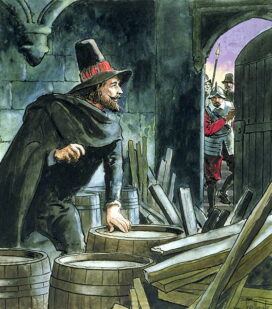Facts about Guy Fawkes
Guy Fawkes Biography
Guy Fawkes is the most famous among the conspirators who took part in 1605’s “Gunpowder Plot,” a failed attempt to blow up King James I of England and the Houses of Parliament.
Fawkes and his partners were Roman Catholics who decided desperate measures were required to replace the king, a Protestant. Their plot was hatched in the spring of 1604 by Robert Catesby, and eventually turned into a plan to blow up the parliament on November 5, 1605, the date of an official opening attended by the king and members of both houses.
Guy Fawkes and a dozen others took part in the plot, with Fawkes designated as the one in charge of the explosives. (During the 1590s he served in the Spanish army in the Netherlands, and it is thought he had experience with munitions.) Fawkes and his cohorts stashed 36 barrels — nearly two tons — of gunpowder in a rented cellar beneath the House of Lords.
A search of the cellar the night of November 4th found the explosives and Fawkes, and he was arrested and tortured; within a few days the other conspirators were either killed or captured. On January 31, 1606, Guy Fawkes was executed, after being tried and convicted of treason.
Because the plot was foiled, November 5th was designated a holiday, but over time the holiday has also become a celebration of Fawkes’s revolutionary intent. English traditions on Guy Fawkes Night include bonfires, fireworks and the burning of effigies known as “guys.”
Extra credit
Guy Fawkes picked up the nickname “Guido” after his stint in the Spanish army… Guy Fawkes was an inspiration for Alan Moore‘s 1982 book, V for Vendetta, and thus for the popular popular mask associated with the story.

